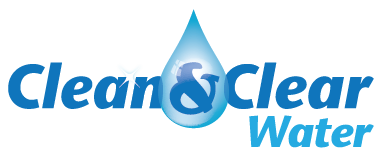Water makes up a great percentage of the earth’s surface. It’s usually put into several uses, from common household uses to industrial uses. This reduces chances of this vast resource to remain without impurities. Water may appear clean but it may not be safe for use. Water from nearly all sources is found to be contaminated with one or more contaminants. Most contaminants are from industrial pollution, widespread improper water disposal methods, practicing poor agricultural methods and also naturally occurring contaminants.
Common water contaminants
Water contaminants can be any physical, chemical, biological, or radio logical particles that are present in water. Contaminants are as result of water pollution and other environment degradation activities. Most contaminants become harmful when they have been ingested for prolonged periods and have reached a certain level. Common water contaminants include:
Organic chemicals
These are chemical contaminants and are of two classes; synthetic organic chemicals, SOCs and volatile organic chemicals, VOCs. SOCs include insecticides, pesticides and herbicides. They are majorly from farms. Most of these SOCs end up in water catchment areas. VOCs are used in industries and places where machines are involved. They are majorly solvents. Through water pollution, they end up in water and can be present for many years.
Nitrates, fluorides and chlorine
Nitrates may occur in high or low levels in natural water. Nitrate sources include seepage from agricultural land, septic tanks, industrial wastewater and animal feedlots. Nitrates are very harmful to infants. It may cause a blue skin condition to them. It’s usually a result of nitrite binding with haemoglobin to form methemoglobin. Methemoglobin lowers the oxygen content in the blood and leads to asphyxiation.
Fluorides and chlorine are used for water treatments. If used in excess, they become contaminants and lead to the formation of trihalomethanes, THMs. THMs are harmful to intestines and bladder. Although fluorides prevent tooth decay, excessive use contributes to tooth enamel destruction and joint pain.
Microbial and organic contaminants
These include bacteria, viruses and pathogens. Pathogens found in water cause water-borne diseases such as typhoid. Many microbes are not dangerous but others are. Harmful microbes include Cryptosporidium, Giardia and E. coli. They can cause gastrointestinal problems. Chemical and physical ways are used in treating water. Chemical treatment uses chemicals such as chlorine and iodine, while common physical treatments include ultraviolet disinfection, ultrafiltration, distillation and boiling.
Inorganic compounds
These are harmful soluble metals and other harmful minerals. They include copper, aluminum, lead, manganese and many others. When taken excessively over prolonged periods, they can lead to very severe conditions in infants and adults. Their sources are from the water pipes and filtration systems used. Complications include; impaired brain function, bitter taste to water and stomach irritation. lead in infants attacks the nervous system.
Sediment
Water from rivers and boreholes usually contain fine mud particles which are almost invisible. Sediment not only affects people but also clogs valves, irrigation systems and also ruins appliances that use water. It can be costly since it reduces water pressure and also frequent maintenance is required. Sediment cartridge filters are used to get rid of sediment.
Conclusion
To ensure your water is not contaminated, it’s always advisable to carry out frequent tests. This will ensure healthy living and available safe water. You can then choose an appropriate method of water purification for your water.
